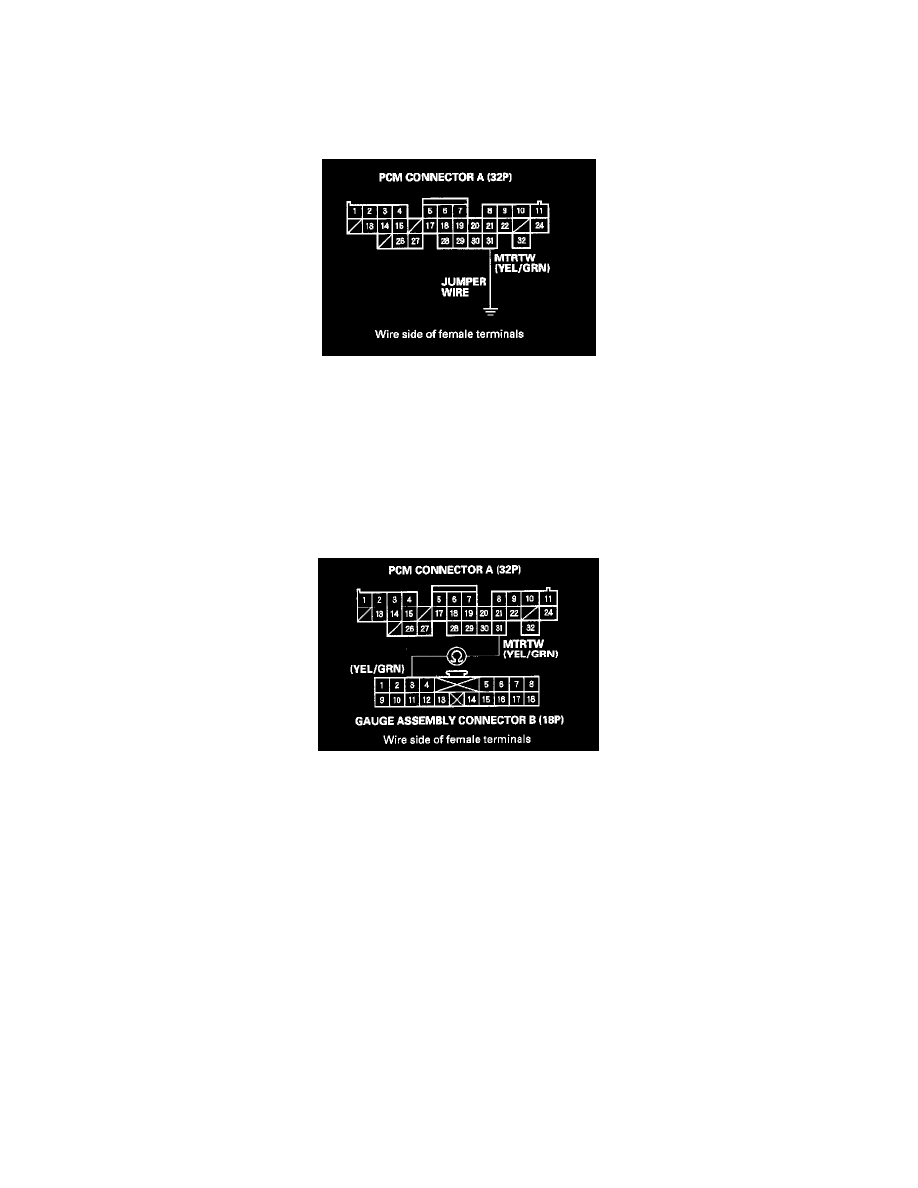MDX V6-3471cc 3.5L (2002)

Temperature Gauge: Testing and Inspection
Coolant Temperature Gauge Test
Coolant Temperature Gauge Needle Does Not Move at ALL
1. Check for fuel and emissions-related DTCs. If you find any, repair the problem, and clear the DTC before continuing.
2. Turn the ignition switch OFF, and connect PCM connector terminal A31 to body ground with a jumper wire.
3. Turn the ignition switch ON (II).
After 30 seconds or more, does the temperature gauge needle move to the Hot side?
YES - Check connections, If OK, substitute a known-good PCM and recheck. If the symptom/indication goes away, replace the original PCM.
NO - Go to step 3.
4. Turn the ignition switch OFF, and disconnect PCM connector A (32 P).
5. Check for continuity between PCM connector terminal A31 and gauge assembly connector terminal B3.
Is there continuity?
YES - Replace the fuel and temperature gauge assembly or the printed circuit board (PCB).
NO - Repair open in the wire between PCM connector terminal A31 and gauge connector terminal B3.
Coolant Temperature Gauge Needle Goes Past the Hot Mark:
1. Check for fuel and emissions related DTCs. If you find any, repair the problem, and clear the DTC before continuing.
2. Turn the ignition switch OFF, and disconnect PCM connector A (32P).
3. Turn the ignition switch ON (II), and watch the coolant temperature gauge.
Does the temperature gauge needle stay on the cold mark? (you may have to watch it for about 30 seconds.)
YES - Substitute a known-good PCM and recheck. If the symptom/indication goes away, replace the original PCM.
NO - Go to step 3.
4. Turn the ignition switch OFF, and disconnect gauge assembly connector B (18P).
